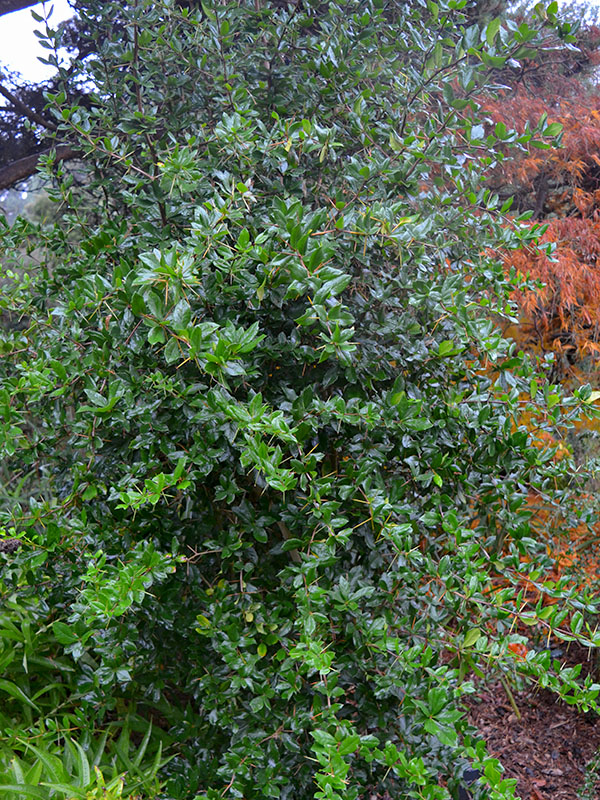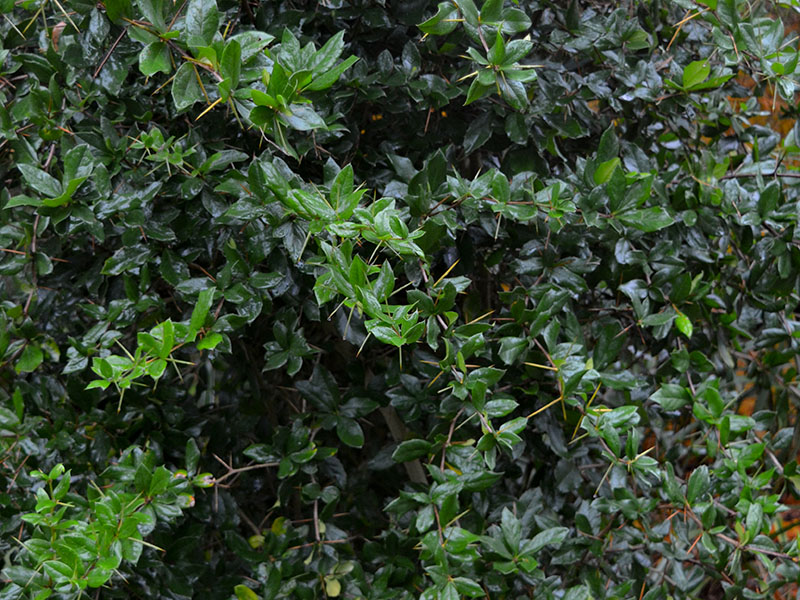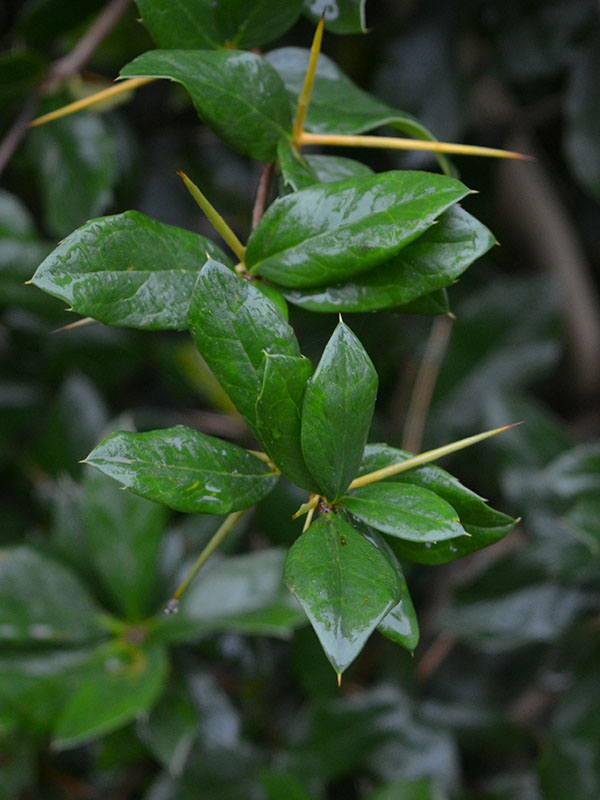Berberis valdiviana (Barberry)
Botanical Information
| Family | Berberidaceae |
| Genus | Berberis |
| Species | valdiviana |
| Category | Woody |
| Type | Shrub (evergreen) |
| Origin | The genus name comes from the Arabic word for fruit, 'berberys'. Native to Valdivia Province, Chile. |
Details
| USDA Hardiness Zone | 8b - 9a |
| USDA Hardiness Ref. | |
| Canadian Hardiness Zone | 8a |
| Canada Hardiness Ref. | |
| RHS Hardiness Zone | H5 |
| RHS Hardiness Ref. | |
| Temperature (°C) | 15 to -10 |
| Temperature (°F) | 15 - 25 |
| Height | Up to 5 m |
| Growth | Medium |
| Flowering Period | May |
Description and Growing Information
| General Description | Berberis valdiviana is an upright evergreen shrub. |
| Landscape | Works well in gardens and as borders and groundcover. |
| Propagation | Propagate by seed (although offspring may be variable), or by cuttings. |
| Cultivation | Will thrive in any soil type that is not waterlogged, and should be grown in full sun. |
| Pests | The bacteria Pseudomonas berberidis may cause black spots on leaves, and the berberry aphid (Liosomaphis berberidis) may also be a problem. |
| Notable Specimens | RHS Garden Rosemoor, North Devon, England. Wakehurst Place, Ardingly, Haywards Heath, Sussex, England. |
| Habitat | Light woodlands. |
| Bark/Stem Description | Stems are grey-yellow, glabrous and covered with spines marked with parallel grooves. |
| Leaf Description | Elliptic in shape, rigid with a leathery texture, up to 5 ? 3 cm, glabrous, margins are even and smooth. The top surface is dark green, bottoms are yellow-green and covered by small fleshy projections (papilla). |
| Flower Description | Burnt orange, up to 20 in a pendulous cluster up to 5 cm. Bloom time is late spring. |
| Fruit Description | Globose, mauve-black, glaucous blue, up to 6 mm in diameter. |
Photographs

Berberis valdiviana, form. Wakehurst Place, Ardingly, Haywards Heath, Sussex, England. 25/10/2019.

Berberis valdiviana, leaf. Wakehurst Place, Ardingly, Haywards Heath, Sussex, England. 25/10/2019.

Berberis valdiviana, leaf. Wakehurst Place, Ardingly, Haywards Heath, Sussex, England. 25/10/2019.
Awards
